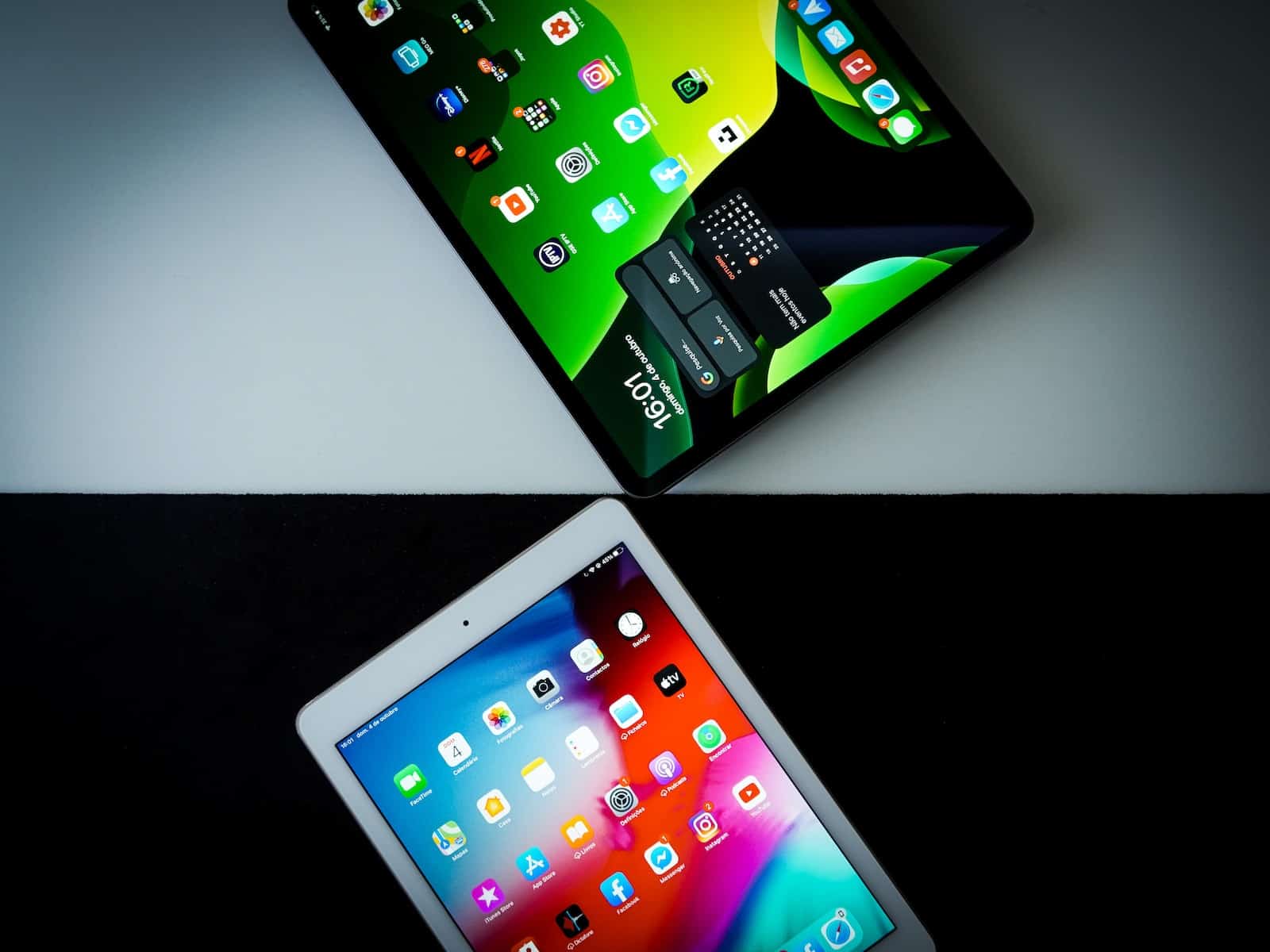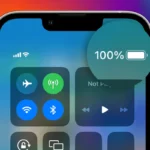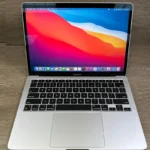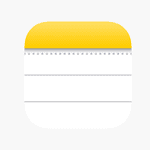Is your iPad refusing to sync with your computer? This common issue can be frustrating when you need to transfer files, back up data, or update your device. A simple restart of both your iPad and computer often solves most syncing problems, but other solutions might involve checking cable connections, updating software, or adjusting sync settings. Many users face this problem, especially after iOS updates or when using older computers.
Sync issues can happen for several reasons. Your iPad might not be properly connected, or your iTunes (on Windows) or Apple Devices app (on Mac) might need an update. Sometimes the problem is with USB cables that are damaged or ports that are dirty. In other cases, your iPad might be open in another window without you realizing it.
How To Fix an iPad That Won’t Sync With a Computer
If your iPad won’t sync with your Windows PC or Mac, it’s usually related to a faulty connection, outdated software, trust permissions, or issues with iTunes or Finder. Here’s how to troubleshoot and fix the problem step by step.
Step 1: Use the Right Cable and USB Port
- Make sure you’re using a certified Lightning or USB-C cable (preferably Apple’s or MFi-certified).
- Try plugging the cable into a different USB port on your computer.
- Avoid using USB hubs or splitters. Plug directly into the computer.
Step 2: Trust This Computer
When you first connect your iPad, you should see a “Trust This Computer?” prompt.
- Unlock your iPad screen.
- If prompted, tap Trust, then enter your passcode.
- If the prompt doesn’t appear, disconnect and reconnect the iPad.
Step 3: Restart Both Devices
- Restart your iPad.
- Restart your computer.
- Reconnect the iPad using the cable after both are fully powered back on.
Step 4: Update iTunes or Finder
- On Windows: Open iTunes and go to Help > Check for Updates.
- On macOS:
- If you’re using macOS Catalina or later, syncing is done through Finder (no iTunes).
- Make sure macOS is fully updated via System Settings > General > Software Update.
Step 5: Update Your iPad and Computer
- On your iPad: Go to Settings > General > Software Update.
- On your computer:
- Windows: Install any pending updates in Settings > Windows Update.
- Mac: Go to System Settings > Software Update.
Both devices need the latest version to ensure compatibility.
Step 6: Check If iPad Shows Up in iTunes or Finder
- Open iTunes (Windows/macOS Mojave and earlier) or Finder (macOS Catalina and later).
- If your iPad is recognized, it will appear in the sidebar.
- If not, continue troubleshooting below.
Step 7: Reset Location & Privacy Settings
If the trust prompt never appears, reset these settings:
- On your iPad, go to Settings > General > Transfer or Reset iPad.
- Tap Reset, then choose Reset Location & Privacy.
- Reconnect your iPad and tap Trust when prompted again.
Step 8: Reinstall Apple Mobile Device Drivers (Windows Only)
- Disconnect your iPad.
- Open Device Manager.
- Expand Universal Serial Bus controllers or Portable Devices.
- Look for Apple Mobile Device USB Driver.
- Right-click and choose Uninstall device.
- Reconnect your iPad and let Windows reinstall the driver.
If the driver doesn’t reinstall:
- Download the latest version of iTunes from Apple’s website and reinstall it.
Step 9: Disable Security Software Temporarily
Some third-party antivirus or firewall software can block device connections.
- Temporarily disable your security software.
- Reconnect the iPad and see if it’s recognized.
- Re-enable the security software afterward.
If the iPad still doesn’t sync, test it with another computer. If it connects there, the issue may be with your computer’s USB drivers or configuration. If it fails on all machines, your iPad’s port or cable may need inspection.
Key Takeaways
- Restart both devices and check physical connections before trying more complex fixes.
- Make sure your computer’s sync software is updated to the latest version.
- Sign in with the same Apple ID on both devices and check authorization settings.
System Compatibility and Software Updates
Making sure your iPad and computer have the right software versions is key to fixing sync issues. Often, a simple update can solve problems that prevent your devices from talking to each other.
Checking iOS and iPadOS Compatibility
Before trying to sync your iPad, check if your computer’s operating system works with your iPad’s iOS version. Newer iPads running iOS 13 or later won’t sync with older versions of macOS using iTunes.
If you have a Mac running macOS Mojave or earlier, you might see sync problems with newer iPads. Some iPad owners have reported that their iPad won’t sync unless they upgrade to macOS Catalina or newer.
For Windows users, make sure you have the latest iTunes version that supports your iPad’s iOS. Windows 7 and older might not work with the newest iPads running iOS 17.
Check Apple’s compatibility chart on their website to confirm your devices can work together.
Updating iTunes on Your Computer
For Mac users with macOS Mojave or earlier, updating iTunes is essential for sync functionality. Go to the App Store, click on “Updates” and install any available iTunes updates.
Windows users should open iTunes, click “Help” in the menu bar, then select “Check for Updates.” If iTunes says it’s up to date but you’re still having issues, try downloading the latest iTunes directly from Apple’s website.
Sometimes uninstalling and reinstalling iTunes can fix stubborn sync problems. Before doing this:
- Back up your iTunes library
- Sign out of your Apple ID in iTunes
- Close iTunes completely
After reinstalling, restart your computer before trying to sync again.
Updating iOS on Your iPad
Outdated iOS can cause sync failures between your iPad and computer. To update your iPad:
- Connect to Wi-Fi
- Go to Settings > General > Software Update
- If an update is available, tap “Download and Install”
If your iPad shows an update but won’t download, you may need to remove and download the update again. Go to Settings > General > iPad Storage, find the update, tap it, then delete it. Afterward, go back to Software Update to try again.
Make sure your iPad has enough battery (at least 50%) or keep it plugged in during updates. If the update still fails, try updating through your computer by connecting your iPad and using iTunes or Finder.
iTunes and iCloud Sync Settings
Properly configuring your sync settings is crucial for getting your iPad to communicate with your computer. Both iTunes and iCloud offer different methods to keep your content updated across devices.
Configuring iTunes for iPad Sync
To set up iTunes for iPad syncing, first make sure iTunes is updated to the latest version. Connect your iPad to your computer using a USB cable and open iTunes. Your device icon should appear in the upper-left corner of the iTunes window.
If your iPad doesn’t appear, try these fixes:
- Use a different USB port or cable
- Restart both your iPad and computer
- Make sure your iPad is unlocked and trusts the computer
In iTunes, select your iPad and navigate through the tabs (Music, Movies, Apps, etc.) to choose what content to sync. Check the boxes next to the content you want to transfer.
If syncing still fails, try resetting your sync history by going to iTunes > Preferences > Devices > Reset Sync History.
Understanding iCloud Sync Options
iCloud sync works differently from iTunes as it automatically updates content across all devices using the same Apple ID. Unlike iTunes, no physical connection is needed.
Key iCloud sync options include:
- Photos: Syncs your entire photo library
- Documents: Keeps files updated across devices
- Mail, Contacts, Calendar: Ensures your personal data stays current
- App Data: Saves app information and progress
For iCloud sync to work properly, all devices must be signed in with the same Apple ID. Check this by going to Settings > [your name] at the top of the screen.
iCloud offers 5GB of free storage. Users needing more space can purchase additional storage plans starting at $0.99/month for 50GB.
Adjusting iCloud Sync on iPad and Computer
On your iPad, go to Settings > [your name] > iCloud to control what syncs. Toggle switches ON for apps and content you want to sync and OFF for those you don’t.
For important sync issues, try these steps:
- Update your iPad to the latest iOS
- Check your internet connection
- Sign out of iCloud and sign back in
- Restart your iPad
On your Mac, adjust iCloud settings by going to System Preferences > Apple ID > iCloud. On Windows, use the iCloud for Windows app to manage sync preferences.
If specific apps aren’t syncing, check if Background App Refresh is enabled. Go to Settings > General > Background App Refresh and ensure the problematic app is turned on.
Remember that large files may take time to sync. Be patient when syncing large photo libraries or document collections.
Troubleshooting Connection Issues
When your iPad won’t sync with your computer, the problem often lies in the physical connection, network settings, or system errors. Addressing these issues systematically can help restore the sync functionality quickly.
Ensuring Proper USB Connection
Check your USB cable for any visible damage like fraying or bends. Damaged cables are a common cause of sync failures. Try using a different Apple-certified cable if possible.
USB ports on your computer can sometimes be the culprit. Try connecting to different ports, especially directly to your computer rather than through a hub. USB hubs often don’t provide enough power for proper iPad connection.
Make sure your connection is secure on both ends. Dust or debris in the port can interfere with the connection. Gently clean ports with compressed air if needed.
After connecting, watch for the “Trust This Computer” prompt on your iPad. If you don’t see it, try to restart both devices. Sometimes a simple reboot resolves connection issues.
Resolving Network Conflicts
Network settings can interfere with your iPad’s ability to sync properly. Try turning off Wi-Fi on your iPad temporarily during the sync process to eliminate potential conflicts.
If you’re using iTunes or Apple Devices app for syncing, check if your firewall or antivirus software is blocking the connection. Temporarily disabling these security features can help identify if they’re causing the problem.
For persistent issues, try resetting your iPad’s network settings. Go to Settings > General > Transfer or Reset iPad > Reset > Reset Network Settings. This won’t delete any content but will clear all network configurations.
Wi-Fi sync issues can sometimes be fixed by ensuring both your iPad and computer are connected to the same network. Check your router settings if problems persist.
Interpreting and Responding to Error Messages
Pay attention to specific error messages. If you see a flashing iPad icon in Finder with repeated pinging sounds, this often indicates a recognition problem.
Error code 0xE8000015 typically means your device is locked. Simply unlock your iPad and try again. For error 0xE800003F, check your device storage as this indicates insufficient space.
Common error solutions:
- Error -54: Rename files with special characters
- Error 9006: Check internet connection
- Error 4013: Update computer’s operating system
If you see “iPhone is disabled, connect to iTunes,” your device needs recovery mode. Connect to your computer, force restart the iPad, and follow the recovery prompts on your computer screen.
Managing iPad Storage and Content
Properly managing your iPad storage ensures smooth syncing with your computer. Balancing content needs with available space and choosing what to sync can prevent common sync problems.
Optimizing iPad Storage
Check your iPad storage by going to Settings > General > iPad Storage. This shows what’s using up space on your device. Delete unused apps by pressing and holding their icons, then tapping “Remove App.”
Clear Safari cache through Settings > Safari > Clear History and Website Data to free up space. This can help when your iPad won’t sync to your Mac or PC.
Offload unused apps by going to Settings > General > iPad Storage > Offload Unused Apps. This keeps documents and data but removes the app itself.
Back up photos to iCloud or your computer before deleting them from your iPad. Photos often take up significant storage space.
Selective Syncing of Photos, Music, and Apps
Use selective syncing to choose exactly what content transfers between devices. Connect your iPad to your computer with a USB cable and open iTunes or Finder.
Click on your iPad icon and navigate to different content tabs (Music, Photos, Apps). Uncheck “Sync All” and instead select specific playlists, albums, or folders to sync.
For photos, consider creating specific albums on your computer to sync rather than your entire photo library. This saves space and speeds up the sync process.
If music won’t sync properly, try deselecting all music in iTunes, applying changes, then reselecting what you want to sync.
Use the File Manager app on iPad to manually organize and delete documents taking up space. This gives you more control over what stays on your device.
User Authorization and Security
Successful iPad syncing often hinges on proper device authorization and security settings. These elements ensure your computer can safely access your iPad’s data while maintaining your privacy.
Authenticating Apple ID and Trusted Devices
To sync your iPad with your computer, you must first sign in with your Apple ID. On a Mac, open Finder. On a PC, launch iTunes or Apple Devices app.
If your device won’t sync, check if your computer is authorized:
- Open iTunes (Windows) or Finder (Mac)
- Go to Account > Authorizations > Authorize This Computer
- Enter your Apple ID and password
- Click Authorize
Each Apple ID can authorize up to 5 computers. If you’ve reached this limit, you’ll need to deauthorize one first.
Sometimes security software can block iTunes connections. If you suspect this is happening, check your security software settings and temporarily disable them to test if that’s causing the issue.
Troubleshooting ‘Trust This Computer’ Alerts
When you connect your iPad to a computer for the first time, a “Trust This Computer” alert appears. If you don’t see this prompt or accidentally dismissed it, your iPad won’t sync.
To fix this issue:
- Disconnect your iPad from the computer
- Restart both devices
- Reconnect your iPad
- Look for the trust prompt on your iPad screen
- Tap “Trust” and enter your passcode
If the alert doesn’t appear, try a different USB cable or port as damaged connections can prevent proper detection.
For persistent problems, you might need to reset the trust settings. To do this, go to Settings > General > Reset > Reset Location & Privacy on your iPad. The next time you connect, the trust dialog should reappear.
Technical Support and System Status
When your iPad won’t sync with your computer, Apple offers several resources to help diagnose and fix the problem. These tools can identify service outages and provide personalized troubleshooting steps.
Utilizing Apple’s Support Resources
If you’re having trouble syncing your iPad to your computer, Apple’s support website offers helpful solutions. Start by visiting the official Apple Support page for iPad to find specific guidance.
Apple Support provides step-by-step instructions for common syncing issues. You can:
- Chat with an Apple expert online
- Schedule a call with technical support
- Make an appointment at an Apple Store Genius Bar
Make sure your Apple ID is set up correctly on both devices. Many sync problems happen when Apple ID settings don’t match or when you’re signed out on one device.
Try Apple’s automated troubleshooter tools that can walk you through common fixes like checking your USB cable connections or restarting your devices.
Checking Apple’s System Status Page for Issues
Sometimes sync problems aren’t your fault but are caused by Apple service outages. The Apple System Status page shows the health of all Apple services in real time.
Visit Apple’s System Status page to see if iCloud, iTunes, or other sync-related services are working normally. Green dots mean the service is running; yellow or red indicators show problems.
Service interruptions can affect:
- iCloud syncing
- iTunes Store
- App Store downloads
- Device backups
If you see outages, you’ll need to wait until Apple fixes the problem. Most service issues are resolved within hours.
The status page also helps confirm if problems are with your setup or Apple’s systems. This saves time troubleshooting issues that you can’t fix on your end.
Frequently Asked Questions
iPad syncing issues are common but fixable with the right steps. Most problems stem from connection issues, software glitches, or outdated systems that can be resolved with simple troubleshooting.
What steps can I take if my iPad doesn’t show up in iTunes on my Windows PC?
First, check your USB cable for damage. Frayed or broken cables often cause connection problems. Try using a different Apple-certified Lightning cable.
Restart both your iPad and computer. This simple step can fix many syncing issues.
Make sure iTunes is updated to the latest version. Outdated software frequently causes recognition problems.
Try different USB ports on your computer. Some ports may work better than others, especially USB ports directly on the computer rather than through a hub.
How can I resolve an iPad that is disabled and requests connection to iTunes?
Connect your iPad to the computer using a Lightning cable. Open iTunes (Windows) or Finder (Mac) and wait for it to recognize your device.
If prompted, choose “Restore” to reset your iPad. This will erase your data, but it will remove the disabled status.
After restoring, you can set up your iPad as new or restore from a backup. Always make regular backups to prevent data loss in these situations.
What troubleshooting methods are available when iTunes fails to recognize my iPad?
Update all your software. Make sure your computer operating system, iTunes, and iPad iOS are all running the latest versions.
Check for any security software that might block the connection. Temporarily disable antivirus or firewall programs to see if they’re causing the issue.
Install the latest Apple device drivers. On Windows, you might need to update or reinstall the Apple Mobile Device USB Driver.
Try the recovery mode method if standard connections fail. This involves holding specific buttons while connecting to force recognition.
What causes an iPad to only charge and not connect to a PC?
A damaged Lightning cable is often the culprit. The power wires may work while the data wires are broken.
Trust issues can prevent connections. If you see a “Trust This Computer” prompt on your iPad but don’t respond to it, the iPad will only charge.
Outdated drivers on your computer might recognize the iPad as a charging device but not as a data device. Update or reinstall the Apple drivers.
Water damage or port issues can also cause this problem. Check for debris in the charging port and clean it carefully if needed.
How can I force my iPad to sync with my computer?
Manually trigger a sync by connecting your iPad, opening iTunes or Finder, selecting your device, and clicking the “Sync” button.
Toggle your iCloud settings. Turn off specific syncing features like Reminders, Notes, or Photos, then turn them back on after a few minutes.
Try the “Trust” reset method. Go to Settings > General > Reset > Reset Location & Privacy, then reconnect to your computer and approve the trust prompt.
Check for storage space issues on both devices. Insufficient space often prevents proper syncing.
Why is my iPad unable to connect to my Mac via Bluetooth?
Ensure Bluetooth is turned on for both devices. This sounds simple but is often overlooked.
Check the compatibility between your iPad and Mac models. Older devices may have Bluetooth versions that don’t work well together.
Reset the network settings on your iPad. Go to Settings > General > Reset > Reset Network Settings, then try connecting again.
Update both devices to the latest operating systems. Apple frequently improves Bluetooth connectivity with software updates.







